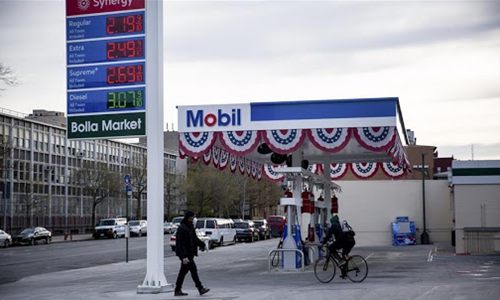US oil futures dip over 7 pct amid oversupply concerns
Source:Xinhua Published: 2020/4/27 13:53:06

A sign displays gas prices at a gas station in the Brooklyn borough of New York, the United States, on April 20, 2020. U.S. oil prices crashed to the negative territory for the first time in history on Monday, fueled by pandemic-related demand shock and oversupply fears. The West Texas Intermediate (WTI) for May delivery shed 55.9 U.S. dollars, or over 305 percent, to settle at -37.63 dollars a barrel on the New York Mercantile Exchange, implying that producers would pay buyers to take oil off their hands. (Photo by Michael Nagle/ Xinhua)
Oil prices dropped noticeably Sunday night with the U.S. benchmark down more than 7 percent amid persistent oversupply concerns.
The West Texas Intermediate for June delivery slipped 7.2 percent to 15.72 U.S. dollars a barrel, while Brent crude for June delivery slid 0.8 percent.
The oil markets have been under pressure recently amid coronavirus-tied demand shock and a supply glut.
Oil futures on Friday gained for a third straight session, but U.S. prices posted a record weekly loss of 32.3 percent based on the June contract. It is the biggest weekly percentage loss on record, according to Dow Jones Market Data. June Brent declined 23.6 percent for the week ending Friday.
Global oil demand is expected to fall by a record 9.3 million barrels per day year-on-year in 2020, the International Energy Agency (IEA) warned in its closely-watched monthly report.
The IEA said that demand in April is estimated to be 29 million barrels per day lower than a year ago, down to a level last seen in 1995, due to the COVID-19 pandemic as containment measures have brought mobility almost to a halt.
Posted in: ECONOMY